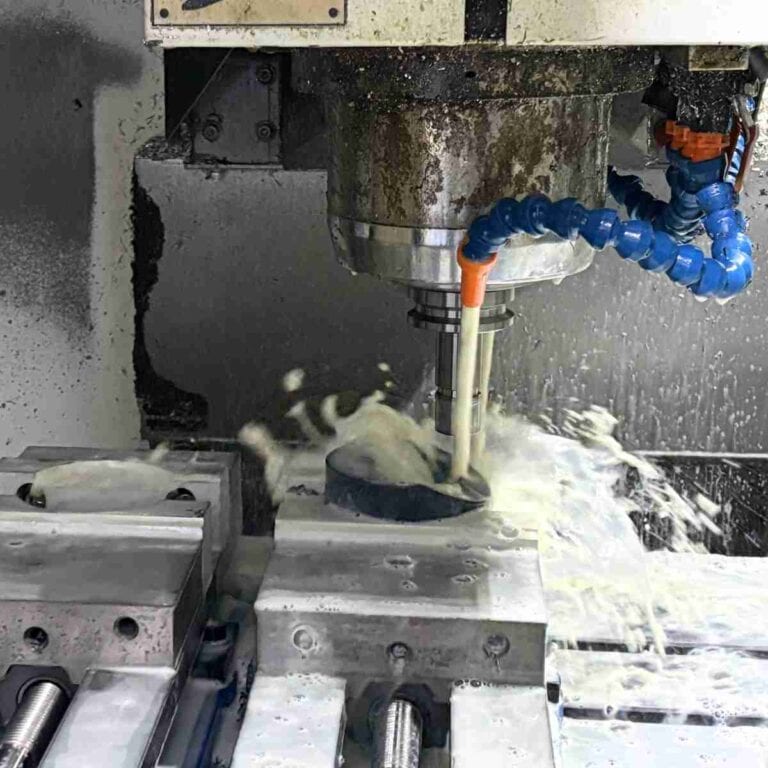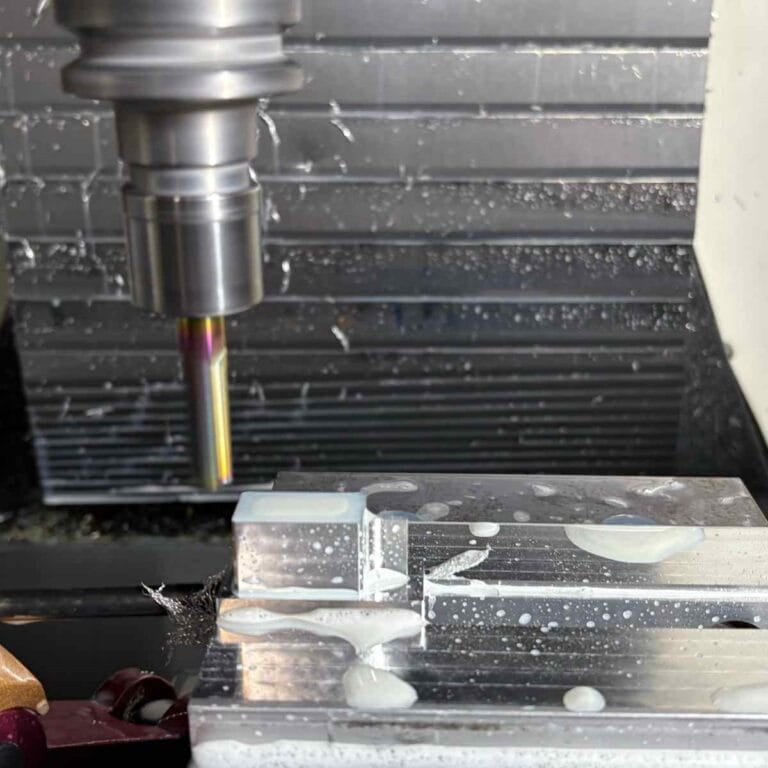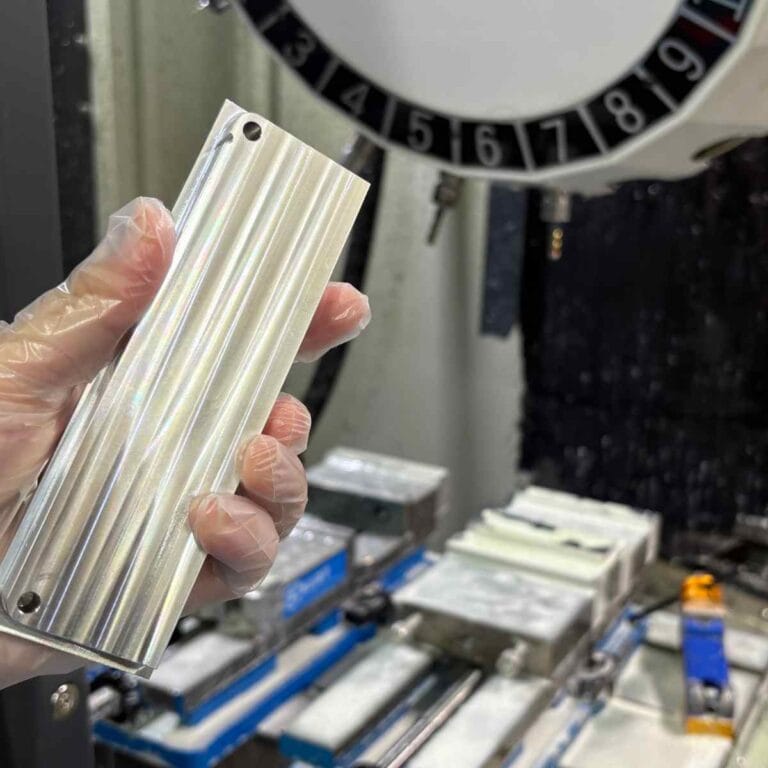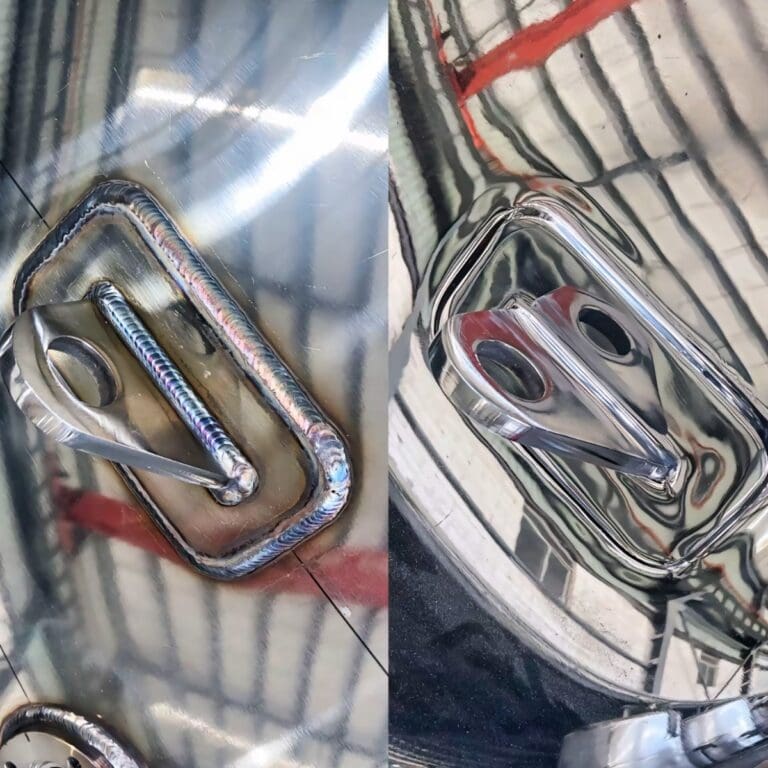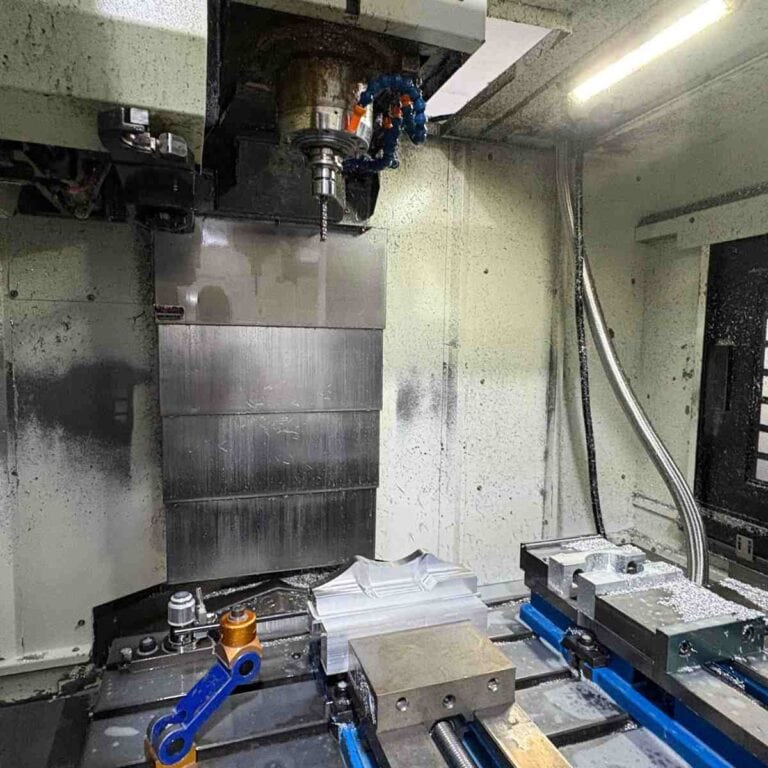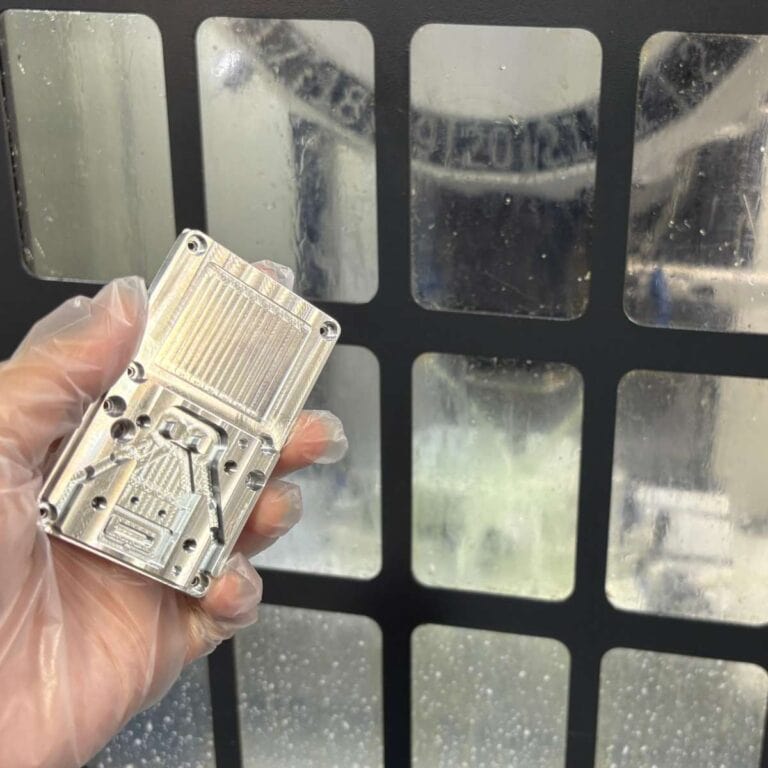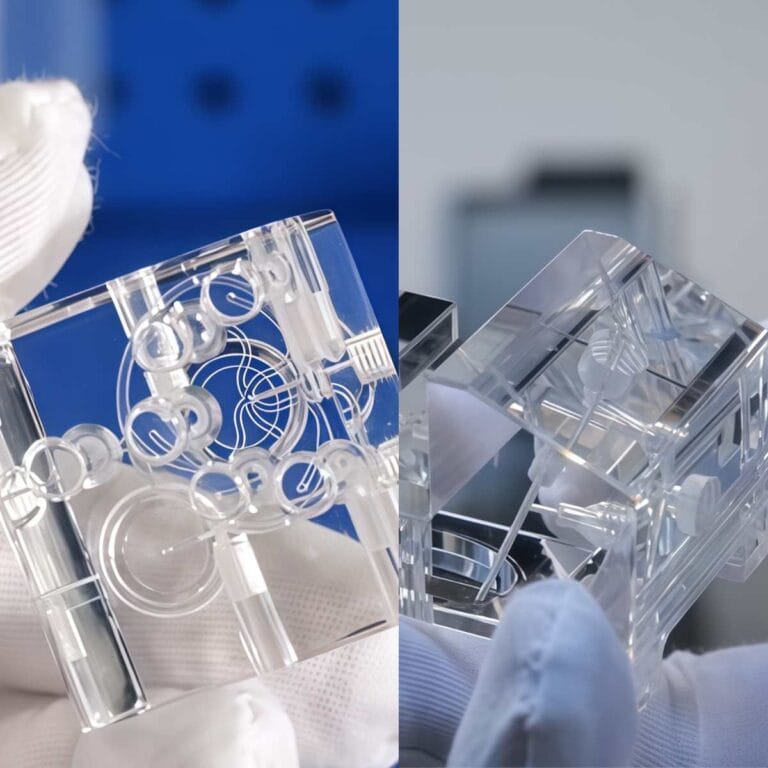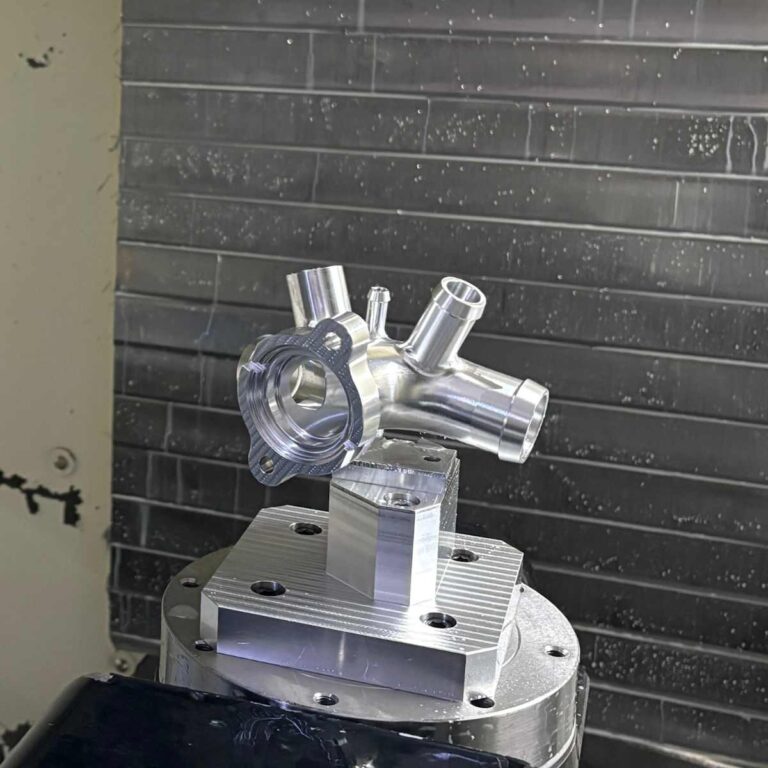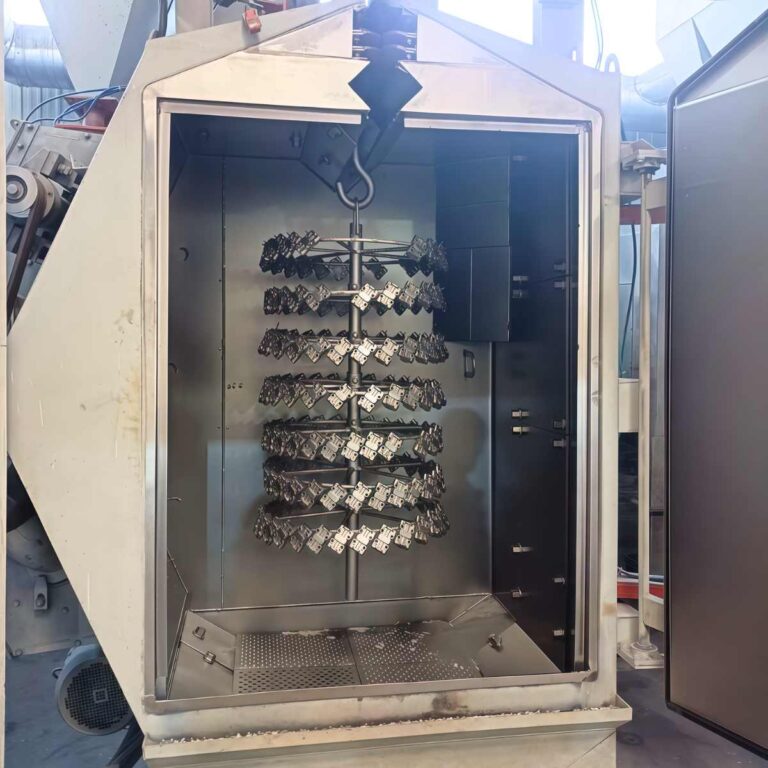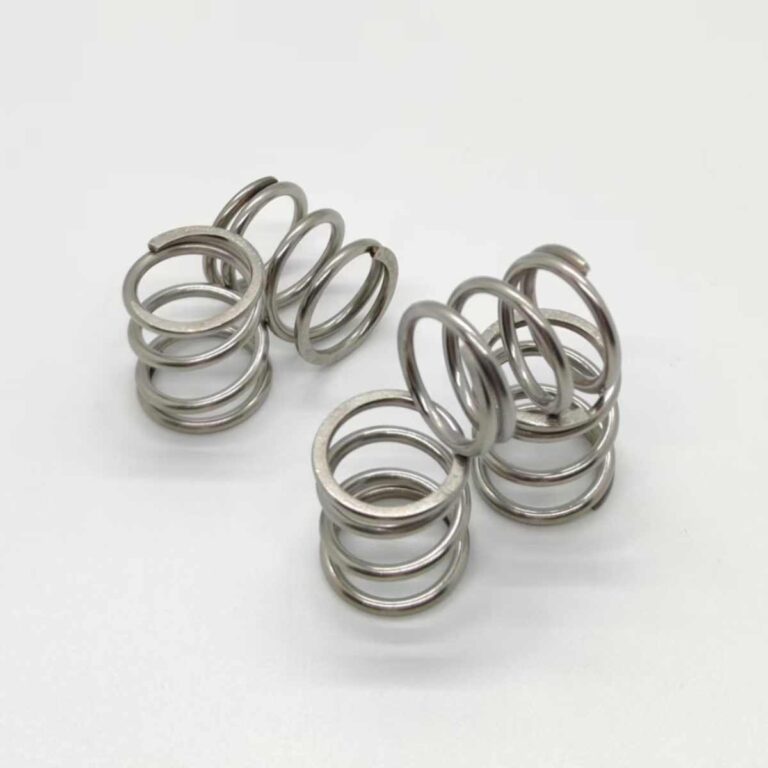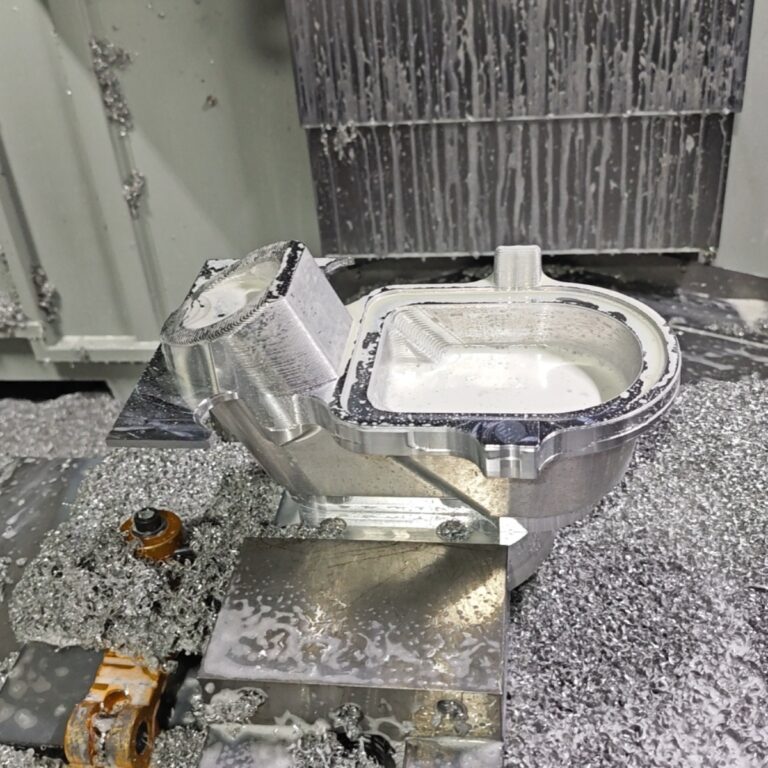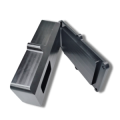In modern manufacturing, CNC (computer numerical control) machine tools have long been a core component of production. With technological advancements, the range of types of CNC machines has continued to expand, from the most common lathes and milling machines to laser cutting, water jet cutting, EDM (electrical discharge machining), five-axis and even multi-axis machine tools. Today, automated and intelligent tool-changing systems, as well as 3D printing equipment, have become integral parts of the types of CNC machines available in the market. This article will comprehensively introduce 15 mainstream types of CNC machines, providing a clear and easy-to-understand overview of their characteristics, application scenarios, and the significant value they bring to modern manufacturing.
What Is A CNC Machine
CNC (Computer Numerical Control) machine tools are automated devices that use computer programs to control their movements and machining processes. Unlike traditional machine tools that rely on manual operation, CNC machine tools use numerical control systems to convert design drawings (such as CAD files) into machining paths, enabling high-precision and efficient manufacturing of parts.
CNC machine tools are irreplaceable in modern manufacturing. They are widely used in aerospace, medical devices, automotive manufacturing, electronic communications, and other fields. They not only ensure micron-level precision in parts but also enable stable machining of complex shapes. As the global manufacturing industry continues to demand higher quality and efficiency, CNC machine tools have become a core support for industrial upgrading and intelligent manufacturing.
Compared with traditional processing methods, the advantages of CNC machine tools are very significant:
Higher Precision : processing error can be controlled within ±0.01 mm or even smaller;
Strong Consistency : each batch of parts can maintain the same size and quality;
Improved Efficiency : can operate continuously for 24 hours, significantly shortening the delivery cycle;
Strong Flexibility : different products can be quickly switched by changing the program;
Low Labor Cost : Reduce dependence on skilled workers and reduce manual errors;
Improved Safety : Automated machining reduces the risk of workers directly operating hazardous machine tools.
CNC machine tools are not only the “heart” of modern manufacturing but also a key tool in driving the intelligent and digital development of the industry. They demonstrate irreplaceable value in ensuring product precision, shortening production cycles, increasing production capacity, and reducing costs.
Basic Components Of A CNC Machine Tool System
The basic components of a CNC machine tool system include the CNC control system, servo drive system, tool and toolholder clamping, workpiece clamping and worktable, and cooling and lubrication systems. These components work together to enable the machine tool to achieve high-precision, high-efficiency automated machining. Understanding these key components helps us better understand the performance optimization and application value of CNC machine tools.
![]()
CNC Control System
This is the “brain” of a CNC machine tool, primarily composed of a computer numerical control unit (CNC unit) and software. It receives and interprets program code (such as G-code and M-code) generated by CAD/CAM and converts it into motion instructions for the machine tool. An excellent control system enables high-speed computing, error compensation, and multi-axis linkage control.
Servo Drive System
Servo motors and drives form the “nerves and muscles” of machine tools, translating control system commands into precise movements. High-performance servo drives ensure positioning accuracy of ±0.005 mm or higher, meeting the demands of high-precision part machining.
Tool And Tool Holder Clamping
The cutting tool is the core component that directly contacts the workpiece and cuts the metal. The toolholder and clamping system ensure the stability and rigidity of the tool’s mounting. Different machining tasks require tools of varying materials and geometries. For example, carbide tools are suitable for high-speed cutting, while stainless steel tools are ideal for wear-resistant machining.
Workpiece Clamping And Workbench
The workpiece is fixed to the workbench by a fixture, chuck or vacuum cup to ensure stability and consistency during processing. High-precision clamping can reduce vibration and displacement, thereby improving the dimensional accuracy and surface quality of the finished product.
Cooling And Lubrication System
The cutting process generates significant heat and friction. Cooling and lubrication systems circulate cutting fluid to reduce temperatures, minimize tool wear, and remove chips. Proper cooling not only extends tool life but also maintains the workpiece’s surface finish and prevents thermal deformation.
A CNC machine tool system consists of multiple components working in close coordination: the control system ensures intelligence, the servo system provides power, the tool and clamping system ensure precision, the fixture and worktable ensure stability, and the cooling system maintains durability. The optimization and matching of each component is crucial to ensuring high efficiency and precision machining.
Different Types Of CNC Machine Tools
CNC machine tools are incredibly diverse, ranging from common milling machines and lathes to advanced five-axis machining centers. Each has its own unique structure and application scenarios. Different types of CNC machines differ in their machining capabilities, motion methods, compatible materials, and precision requirements. Choosing the most suitable CNC machine can improve productivity and product quality in this competitive market.
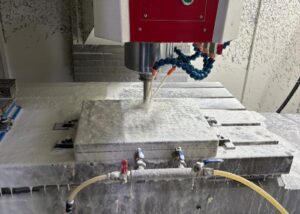
1. CNC Milling Machine
CNC milling machines are among the most common and core CNC equipment in modern manufacturing. They utilize rotating tools coupled with multi-axis motion to achieve cutting operations on flat surfaces, curved surfaces, and complex geometries. Compared to traditional manual milling machines, CNC milling machines, controlled by computer programs, offer higher precision, greater flexibility, and improved repeatability. They are widely used in industries such as aviation, automotive, medical devices, and mold manufacturing.
In practical applications, CNC milling machines are capable of processing planes, slots, holes, and complex three-dimensional surfaces. Typical parts include mold cavities, engine components, medical implants, and precision fixtures. They are not only capable of rough machining, but also of finishing operations requiring extremely high precision. Modern CNC milling machines typically have a machining accuracy of ±0.005 mm, while some high-end models can even reach ±0.002 mm. Combined with a high-speed spindle and multi-axis linkage, complex parts can be formed in a single clamping operation. By quickly changing different tools, it can adapt to the processing needs of a variety of materials such as aluminum alloys, stainless steel, titanium alloys, copper alloys, and engineering plastics, demonstrating extremely high efficiency and stability for both small-batch customization and large-scale production.
CNC Milling Machine Core Features
| feature | illustrate |
| Typical machined parts | Mold cavities, engine parts, medical implants, fixtures |
| Commonly used materials | Aluminum alloy, stainless steel, titanium alloy, copper alloy, engineering plastics |
| Processing accuracy | ±0.005 mm, some high-end machine tools can reach ±0.002 mm |
| flexibility | Suitable for small/large batches, multi-axis linkage can process complex surfaces |
| Application Industry | Aerospace, automobile manufacturing, medical devices, molds, industrial equipment |
2. CNC Lathe
CNC lathes are another core type of equipment in CNC machining, primarily used for machining rotating workpiece surfaces. By combining workpiece rotation with linear or curved tool feed, they can produce a variety of geometric shapes, including external circles, internal holes, end faces, and threads. Compared to traditional manual lathes, CNC lathes are not only more efficient but also enable automated machining of complex curved surfaces while maintaining precision.
CNC lathes offer high speed, high precision, and high repeatability, making them suitable for high-volume production. Modern CNC lathes typically achieve machining accuracy of ±0.01 mm, with some high-end models even maintaining a stable accuracy of ±0.005 mm. Their automatic tool changing system and multi-axis control capabilities enable them to complete multiple processes, including turning, boring, grooving, and tapping, in a single setup, significantly improving production efficiency.
CNC lathes are widely used in industries such as automotive, aerospace, medical devices, and energy equipment. Typical parts include shafts, gear blanks, sleeves, fasteners, medical implants, and high-precision rotating parts. They are capable of machining not only steel, aluminum alloys, stainless steel, and titanium alloys, but also some engineering plastics, meeting the strength, wear resistance, and surface finish requirements of various applications.
CNC Lathe Core Features
| feature | illustrate |
| Typical machined parts | Shaft parts, gear blanks, sleeves, threads, medical implants |
| Commonly used materials | Steel, stainless steel, aluminum alloy, titanium alloy, engineering plastics |
| Processing accuracy | ±0.01 mm, some high-end machine tools can reach ±0.005 mm |
| Process advantages | High speed and high precision, suitable for mass production and can complete multiple processes |
| Application Industry | Automobile manufacturing, aerospace, medical equipment, energy equipment |
3. CNC Drilling Machine
A CNC drilling machine is a type of numerically controlled machine tool specialized for drilling. It’s primarily used to create holes in workpieces, including through holes, blind holes, countersunk holes, and precision holes. Compared to traditional drilling machines, CNC drilling machines utilize programmed control to automate the drilling position, depth, and angle, significantly improving accuracy and consistency.
Its most significant technological advantage is its precision drilling capability , enabling it to maintain high accuracy without deformation on thin-walled parts or small workpieces. Modern CNC drilling machines typically achieve hole position accuracy of ±0.01 mm and hole diameter tolerances within ±0.005 mm, making them ideal for machining parts requiring stringent assembly requirements. Some high-end machine tools are also equipped with high-speed spindles and automatic tool changing systems, enabling them to perform complex processes such as drilling, tapping, and reaming.
CNC drilling machines are commonly used in the electronics, aerospace, automotive, and medical industries. Typical parts include holes in circuit boards, cooling holes in engine parts, tiny mounting holes in medical devices, and lightweight hole clusters in aviation parts. They are particularly well-suited for machining thin-walled parts, as traditional machining can easily cause material warping or hole position deviation. CNC drilling machines, however, ensure consistent finished parts through optimized cutting parameters and multi-point positioning.
CNC Drilling Machine Core Features
| feature | illustrate |
| Typical machined parts | Circuit board holes, cooling holes, mounting holes for thin-walled parts, micro-holes for medical devices |
| Commonly used materials | Aluminum alloy, stainless steel, titanium alloy, engineering plastics |
| Processing accuracy | Hole position accuracy ±0.01 mm, hole diameter tolerance ±0.005 mm |
| Process advantages | Precision drilling, not easy to deform, suitable for thin-walled parts and micro-hole processing |
| Application Industry | Electronics, aerospace, automotive, medical devices |
4. CNC Grinding Machine
A CNC grinder is a type of numerically controlled equipment specialized in high-precision surface machining, primarily using a high-speed rotating grinding wheel to perform fine cutting on workpieces. It effectively removes minute stock removal, achieving exceptionally high dimensional accuracy and surface finish, making it an indispensable machine tool in mold manufacturing, precision parts machining, and hard material processing.
Compared to traditional manual grinders, CNC grinders use program-controlled grinding wheel feed, angle, and speed to ensure consistent machining every time. Modern high-end CNC grinders can achieve machining accuracies of ±0.001 mm and surface roughness of Ra0.2 μm or higher, making them widely used in industries requiring extreme precision.
In practice, CNC grinding machines are commonly used to machine molds, precision bearings, hydraulic components, cutting tools, and carbide parts. They are capable of fine grinding not only steel, stainless steel, and titanium alloys, but also difficult-to-machine materials such as ceramics and glass. Their greatest advantage lies in their superior surface finish, which extends part life and improves assembly accuracy.
CNC Grinding Machine Core Features
| feature | illustrate |
| Typical machined parts | Mold cavities, bearings, cutting tools, hydraulic parts, carbide parts |
| Commonly used materials | Hard steel, stainless steel, titanium alloy, ceramic, cemented carbide |
| Processing accuracy | Dimensional accuracy ±0.001 mm, surface roughness up to Ra0.2 μm |
| Process advantages | Ultra-high precision, excellent surface quality, suitable for hard materials |
| Application Industry | Mold manufacturing, precision instruments, aerospace, medical equipment, automotive industry |
5. CNC Engraving Machine/Woodworking Routing Machine
A CNC router, also often called a woodworking router, is a type of CNC machine specifically designed for processing lightweight materials. It’s primarily used for engraving and cutting wood, plastic, acrylic, composite materials, and some soft metals. Compared to a CNC milling machine, a router focuses more on rapid prototyping and the ability to carve complex patterns, rather than extreme precision.
CNC engraving machines are typically equipped with high-speed spindles (typically 18,000–30,000 RPM) and multi-axis motion control, enabling them to efficiently produce complex 2D and 3D patterns, such as furniture carvings, advertising signs, decorative components, and mold models. Because they primarily process non-metallic or lightweight materials, engraving machines lack the rigidity and cutting force of milling machines, but they offer significant advantages in speed and surface quality.
In practice, CNC engraving machines are widely used in the woodworking industry, advertising, home decoration, and art creation. They can achieve exquisite and complex engraving effects and are a lightweight processing tool that cannot be replaced by milling machines.
CNC Engraving Machine Core Features
| feature | illustrate |
| Typical machined parts | Furniture carvings, advertising logos, mold models, decorative pieces |
| Commonly used materials | Wood, acrylic, PVC, composite board, soft metal |
| Spindle speed | 18,000–30,000 RPM, high-speed cutting suitable for light materials |
| Difference from milling machine | The precision is slightly lower than that of milling machines, but the speed is fast and it is good at complex engraving and light processing. |
| Application Industry | Carpentry, advertising, home decoration, art creation, model making |
6. CNC Plasma Cutting Machine
A CNC plasma cutter is a digitally controlled device that uses a high-temperature plasma arc to rapidly cut metal. Ionized plasma gas forms a high-temperature, high-speed jet that melts and blows away the workpiece, achieving the desired effect. Compared to flame cutting, plasma cutting offers faster speeds, greater precision, and a smaller heat-affected zone.
Plasma cutting machines can process a variety of metal materials, including carbon steel, stainless steel, and aluminum alloys. The cutting thickness range typically ranges from 1 mm to 50 mm , with some industrial-grade equipment even exceeding 100 mm . This makes them a common tool in steel structure manufacturing, shipbuilding, machinery manufacturing, and other metalworking industries.
Compared to laser cutting, plasma cutting is more cost-effective and can process thicker plates, but its cutting accuracy and surface finish are slightly inferior. Therefore, it is most widely used in thick plate cutting and large steel structure manufacturing.
CNC Plasma Cutting Machine Core Features
| feature | illustrate |
| Cutting thickness range | Conventional 1–50 mm, high-end models can reach over 100 mm |
| Processing materials | Carbon steel, stainless steel, aluminum alloy, copper and other conductive metals |
| Processing speed | 2–5 times faster than flame cutting, suitable for mass production |
| Cost and efficiency | The cost is lower than laser cutting, and the advantage of thick plate cutting is obvious |
| Application Industry | Steel structure, shipbuilding, engineering machinery, and construction equipment manufacturing |
7. CNC Laser Cutting Machine
A CNC laser cutting machine is a digitally controlled device that uses a high-energy-density laser beam to cut metals and non-metals. The laser, once focused, instantly melts or vaporizes the material, and an assist gas blows away the slag, creating an extremely fine cutting gap. Compared to traditional cutting methods, laser cutting is faster, more precise, and capable of processing extremely complex contours.
Modern laser cutting machines offer positioning accuracy of up to ±0.01 mm and a kerf width of just 0.1–0.3 mm , making them particularly suitable for parts requiring exceptional appearance and size. They are widely used in sheet metal processing, electronics manufacturing, medical equipment, aerospace, and handicraft industries.
Compared to plasma cutting, laser cutting has advantages in high precision, smooth cuts, and the absence of secondary processing . However, laser cutting is slightly disadvantageous in terms of thick plate cutting and cost. Therefore, it is more suitable for cutting complex patterns on thin plates and medium-thick plates.
CNC Laser Cutting Machine Core Features
| feature | illustrate |
| Processing accuracy | Positioning accuracy ±0.01 mm, slit width 0.1–0.3 mm |
| Cutting material | Carbon steel, stainless steel, aluminum alloy, copper, titanium, and some non-metals (such as acrylic, wood) |
| Speed and efficiency | Fast cutting speed, suitable for mass production and complex contour processing |
| Costs and limitations | Thin plate processing has obvious advantages, but the efficiency and cost of thick plate processing are not as good as plasma/water jet. |
| Application Industry | Sheet metal processing, electronic manufacturing, medical equipment, aerospace, decoration and crafts |
8. CNC Water Jet Cutting Machine
CNC water jet cutting machines utilize a high-pressure water stream ( typically 3,000–6,000 bar ), optionally supplemented with abrasive particles, to “cold-cut” materials. Unlike laser or plasma cutting, water jet cutting creates no heat-affected zone (HAZ), thus avoiding metal hardening, material deformation, or color change. This makes it particularly suitable for heat-sensitive and brittle materials.
It can cut almost all materials, including glass, ceramics, stone, composite materials, metal, rubber and plastic . Because the cutting process does not generate heat and does not require secondary processing, water jets are widely used in architectural decoration, aerospace, automotive parts and arts and crafts manufacturing.
Although the speed and efficiency of water jet cutting are slightly lower than that of laser cutting, it is highly versatile and adaptable to materials . Whether it is extremely hard ceramics or fragile glass, water jet cutting can achieve high-quality cutting.
CNC Water Jet Cutting Machine Core Features
| feature | illustrate |
| Cutting method | Cold cutting, no heat affected zone, no change in material properties |
| Cutting material | Glass, ceramics, marble, composite materials, metals, rubber, plastics |
| Precision and surface quality | The cut is smooth and neat, usually no secondary processing is required |
| Thickness range | Cutting thickness from 1 mm to over 200 mm |
| Application Industry | Architectural decoration, aerospace, automobile manufacturing, ceramics and glass, arts and crafts |
9. CNC Electric Discharge Machining (EDM)
CNC electrical discharge machining (EDM) is a machining method that uses pulsed discharge to erode metal, removing material without directly contacting the workpiece. EDM mainly includes wire cutting (WEDM) and sinker EDM :
Wire Cutting (WEDM): Cutting the workpiece by moving electrode wire (usually molybdenum wire or copper wire), widely used in the processing of mold parts, precision contours and complex geometries.
Sinker EDM: Sinker EDM uses custom electrodes for discharge molding, often used in the manufacture of complex cavities and carbide molds.
The greatest advantage of EDM is its ability to process high-hardness materials (such as hardened steel, cemented carbide, and titanium alloys) while achieving exceptionally high machining accuracy and surface quality. Typically, EDM can achieve an accuracy of ±0.002 mm and surface roughness as low as Ra 0.2 μm , making it an irreplaceable tool in mold manufacturing, precision parts processing, and aerospace.
CNC EDM Core Features
| feature | illustrate |
| Processing method | Wire Cutting Machine (WEDM), Sinker EDM |
| Suitable materials | Cemented carbide, hardened steel, stainless steel, titanium alloy |
| Precision and surface quality | Accuracy up to ±0.002 mm, surface roughness Ra 0.2 μm |
| Advantages | Capable of processing high hardness materials, complex cavities and precise contours |
| Application Industry | Mold manufacturing, aerospace, medical equipment, precision parts processing |
10. CNC 3D Printer
CNC 3D printers are digitally controlled devices based on additive manufacturing (AM) . They build parts by depositing material layer by layer, rather than removing material like traditional CNC machine tools. This approach not only significantly reduces material waste but also enables the creation of complex geometries that are difficult to achieve using traditional machining.
materials
including plastics (such as ABS, PLA, and nylon), metal powders (such as stainless steel, titanium alloys, and aluminum alloys), resins, and composites. Metal 3D printing, in particular, often utilizes selective laser melting (SLM) or electron beam melting (EBM) processes, enabling the production of high-strength, lightweight parts.
The difference between additive manufacturing and subtractive machining:
Traditional CNC machine tools are subtractive manufacturing , removing material through cutting, drilling, and other methods to form parts; 3D printing, on the other hand, is additive manufacturing , stacking material on demand to form the final part. This makes 3D printing more suitable for complex shapes, small-batch production, and rapid prototyping, while CNC machining has clear advantages in scenarios where high-volume production and higher precision are required.
CNC 3D printers can not only be used independently, but are also often combined with CNC milling and turning to form a hybrid manufacturing process . They can achieve rapid prototyping while ensuring surface accuracy and mechanical properties. They are widely used in aerospace, medical implants, lightweight automotive parts, mold manufacturing and other industries.
CNC 3D Printer Core Features
| feature | illustrate |
| Processing method | Additive manufacturing (building up materials layer by layer) |
| Suitable materials | Plastics, metal powders, resins, composite materials |
| Precision and complexity | Complex geometric structures can be realized with an accuracy of approximately ±0.05 mm |
| Advantages | High material utilization, suitable for small batch and prototype production |
| Application Industry | Aerospace, automobile, medical, mold and scientific research |
11. Chip Mounter
Chip placement machines are essential automation equipment in the electronics manufacturing industry , primarily used for high-speed, precise placement of surface-mount devices (SMDs) on printed circuit boards (PCBs). They use a nozzle to pick up components, quickly moving them to the designated location, enabling fully automated production and significantly improving efficiency and yield rates.
In the modern electronics industry, everything from mobile phones and computers to automotive electronics relies on high-density PCB assembly. SMT machines can place hundreds of components in seconds, far exceeding manual production efficiency. They are key to achieving mass
production, standardization, and stabilization .
High-speed placement and automation:
High-end chip placement machines can achieve speeds of tens to hundreds of thousands of pieces per hour (CPH) and support high-precision placement of ultra-small components, such as 0201 size (0.25mm × 0.125mm). Combined with AOI (automated optical inspection) and reflow soldering processes, these machines ensure efficient operation of the entire production line.
It is not only used in the field of consumer electronics, but also widely used in communication equipment, automotive electronics, medical electronics, military electronics and other industries. With the development of 5G, Internet of Things and new energy vehicles, the value of SMT in the production of precision components is becoming more and more prominent.
Core Features Of Placement Machines
| feature | illustrate |
| Main functions | High-speed pick and place of SMD components |
| Typical device dimensions | 0201 (0.25×0.125mm) to large size IC |
| Speed range | Tens of thousands to hundreds of thousands of pieces per hour (CPH) |
| Accuracy | ±0.02 mm (high-end models) |
| Application Industry | Mobile phones, computers, automotive electronics, medical electronics, communication equipment |
12. Multi-Axis CNC Machine Tools (4-axis, 5-axis, 7-axis, 9-axis, 12-axis)
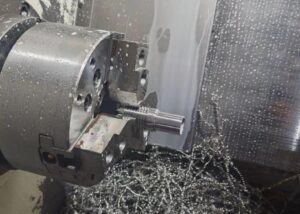
Multi-axis CNC machine tools are essential equipment for machining complex parts in modern manufacturing. While traditional three-axis machines only move in the X, Y, and Z directions, multi-axis machines add rotary and oscillating axes, enabling the tool to engage the workpiece from more angles, reducing setup times and improving machining accuracy and efficiency.
Capacity comparison of machine tools with different axis numbers
4-axis machine tool : adds a rotary axis on the basis of three axes, suitable for processing spiral grooves, curved holes and curved parts.
5-axis machine tools : The most common high-end models, which can process surfaces with multiple degrees of freedom simultaneously, and complete complex parts in one clamping.
7-axis machine tools : Add additional rotation and feed functions on the basis of 5-axis, and are often used for ultra-complex parts such as precision medical implants and aviation turbine blades.
9-axis machine tool : Combining turning and milling functions, it can realize turning, milling, drilling, tapping and other processes on a single device, significantly shortening the process chain.
12-axis machine tools : They are top-level configurations that can control complex machining of multiple workpieces or multiple tools simultaneously. They are often found in ultra-high-precision projects in the aerospace, defense, and energy industries .
Advantages Of Multi-Axis Machine Tools In Complex Part Machining:
Multi-axis machine tools significantly reduce workpiece setup times, avoiding the cumulative errors associated with repeated positioning, while also increasing machining efficiency by 30% to 60% . For complex parts such as curved blades, turbines, and orthopedic implants, multi-axis CNC machine tools are virtually the only viable high-precision solution. Typical accuracies reach ±0.002 mm , with surface roughness Ra better than 0.8 μm .
Multi-axis CNC Machine Tool Core Feature Table
| Machine tool type | Features | Typical Applications |
| 4-axis machine tools | Add a rotary axis to process spiral grooves and curved surfaces | Spiral groove, mold side wall |
| 5-axis machine tools | Multi-degree-of-freedom linkage, complete complex parts in one clamping | Turbine blades, complex automotive parts |
| 7-axis machine tools | Added rotation + feed function for ultra-complex parts processing | Aviation, medical implants |
| 9-axis machine tools | Milling and turning, one machine with multiple processes | Precision shafts, aviation parts |
| 12-axis machine tool | Top multi-axis machining, multiple workpieces in parallel | Aerospace, energy equipment |
13. Automatic Tool Changing CNC Machine Tools (ATC)
Automatic Tool Changer (ATC) CNC machine tools are advanced CNC equipment designed specifically to improve production efficiency. Traditional machine tools require manual tool changes during the machining process, which is not only time-consuming but can also cause clamping errors. However, ATC systems automatically change tools within seconds, significantly shortening machining cycles and ensuring consistent and precise machining.
Improved Production Efficiency:
Typical tool change times for ATC systems range from 2 to 8 seconds , with high-end models achieving speeds of less than 1 second . This translates to significant savings in non-cutting time during mass production. For complex parts requiring multiple steps and tools, ATC machines can complete the entire process in a single setup, increasing efficiency by 30% to 50% .
commonly used in mass production,
are widely used in the automotive, aviation, consumer electronics, and mold manufacturing industries. This is especially true for applications such as mobile phone casings, engine parts, and precision molds, which require continuous processing with multiple tools. ATC can significantly improve processing time and reduce manual intervention.
ATC Machine Tool Core Feature Table
| feature | illustrate |
| Tool change time | 2~8 seconds, high-end models can reach less than 1 second |
| Tool magazine capacity | Commonly there are 20 to 60 pieces, and high-end ones can reach more than 100 pieces. |
| Production efficiency | Save 30%~50% of non-cutting time |
| Application Scenario | Auto parts, aviation structural parts, electronic housings, mold manufacturing |
| Advantages | High efficiency, multiple processes in one molding, reducing manual operation |
14. Hybrid CNC Machine Tools (Additive + Subtractive)
Hybrid CNC machine tools combine the advantages of additive manufacturing (AM) and subtractive manufacturing (SM) and are considered a key trend in the future of manufacturing. Traditional CNC machine tools primarily rely on cutting to remove material, while AM builds complex parts layer by layer. Hybrid CNC machine tools integrate both into a single device, enabling an integrated “print first, then finish” process, significantly improving production flexibility and part performance.
Aerospace medical implants, and energy equipment, hybrid machine tools are becoming increasingly mainstream. They enable both part manufacturing and finishing in the same station, shortening lead times and reducing setup errors. According to industry data, this type of equipment can reduce prototype development cycles by 30% to 50% and significantly lower production costs.
A single machine performs both printing and finishing.
For example, in the manufacture of titanium alloy parts, additive manufacturing is first used to create a near-net-net shape blank, followed by CNC milling to achieve precise dimensions and finish. This not only saves material (reducing cutting waste by 50% to 80%) but also enables the processing of complex internal structures that are difficult to achieve with traditional subtractive processes.
Core Features of Hybrid CNC Machine Tools
| feature | illustrate |
| Process Integration | Additive Manufacturing + Subtractive Processing (Printing + Cutting) |
| Processing accuracy | Precision machining up to ±0.01 mm |
| Applicable materials | Titanium alloy, stainless steel, nickel-based alloy, aluminum alloy, etc. |
| Advantages | Shorten cycle time, reduce scrap, and improve the ability to manufacture complex parts |
| Application Industry | Aerospace, medical equipment, energy equipment, defense industry |
15. Special Custom CNC Machine Tools
Custom CNC machine tools are designed for specific industry needs or specialized processes and are typically not standard for general-purpose machine tools. Their structure, functionality, and processing capabilities are optimized to meet the demands of high precision, specialized materials, or complex processes. These machines are commonly found in industries such as aerospace, medical devices, and automotive manufacturing , helping companies solve production challenges that are difficult to achieve with conventional CNC machine tools.
tools
can process oversized integral wing spars or complex engine components. In the medical industry, custom machine tools can achieve micron-level precision for implants. In automotive manufacturing, they are often used for the efficient processing of high-strength alloy parts and battery trays for new energy electric vehicles. These machines often integrate high-speed spindles, automatic inspection systems, and flexible production modules to ensure a balance between high precision and high efficiency.
Solutions for specialized processes
For example, some custom-built CNC machine tools feature capabilities such as ultrasonic-assisted machining, laser-assisted cutting, and cryogenic cooling to address the challenges of machining difficult-to-machine materials such as carbon fiber, ceramics, and nickel-based alloys. Some machines even integrate online detection and automatic compensation systems, making the production process more intelligent and automated. According to industry statistics, customized CNC machine tools can help companies reduce scrap rates by over 20% , significantly improving overall manufacturing efficiency.
Special Customized CNC Machine Tool Core Features Table
| feature | illustrate |
| Customization direction | Aerospace, medical equipment, automobiles, new energy equipment |
| Processing accuracy | Micron or even submicron |
| Functional Integration | Laser + cutting, ultrasonic + cutting, automatic detection and compensation |
| Advantages | Meet process requirements that cannot be achieved by standard machine tools |
| Application Value | Improve efficiency, reduce scrap rate and enhance competitiveness |
What Are The CNC Machine Tools Classified By The Number Of Coordinate Axes
CNC machine tools can be categorized by the number of axes, including 2-axis, 3-axis, 4-axis, 5-axis, 7-axis, 9-axis, and 12-axis types. The greater the number of axes, the greater the machine’s spatial mobility, increasing the range and complexity of machining. By increasing the number of axes, CNC machine tools can achieve fewer setups, higher machining accuracy, and the production of more complex geometries, making them a key development in modern precision manufacturing.
| Number of axes | Features | Typical Applications |
| 2-axis machine tools | Mainly realizes longitudinal and lateral movement, simple structure and low cost | Simple parts processing, turning |
| 3-axis machine tools | The most common, supports X/Y/Z three-directional cutting | Mold cavity, plane, groove and hole processing |
| 4-axis machine tools | Adding a rotation axis to the 3-axis basis enables side processing | Gears, cams, cylindrical parts |
| 5-axis machine tools | Can control five degrees of freedom at the same time and complete complex parts in one clamping | Aircraft engine blades, medical implants |
| 7-axis machine tools | Multiple degrees of freedom, more flexible, can achieve complex engraving and surface processing | Sculptures, automotive curved parts |
| 9-axis machine tools | Can complete multi-process processing of turning + milling + drilling at the same time | High-precision complex parts, integrated molding |
| 12-axis machine tool | Ultra-high-end machine tools capable of processing virtually any geometry | Aerospace core parts, national defense and military equipment |
What Are The CNC Machine Tools Classified By Control Method
CNC machine tools can be categorized by their control method: point control, linear control, and contour control. The control method directly determines the machine’s motion trajectory and machining capabilities, and is a core criterion for distinguishing machine tool performance. Point control is suitable for positioning and drilling, linear control is suitable for flat machining, and contour control enables cutting of complex surfaces and arbitrary paths.
Point Control
Point control focuses solely on the precise positioning of the tool from one point to another, regardless of the path of motion. It is commonly used on drilling machines, boring machines, and some punching machines, and is particularly suitable for machining parts with holes or point-like distributions.
Features : fast positioning, high precision, but cannot achieve continuous cutting.
Application : drilling , tapping, boring.
Linear Control
Linear control is based on point control and adds the ability to cut along a straight line. The machine tool can control the tool to move continuously in a certain direction, suitable for machining planes, grooves and straight contours.
Features : It can achieve straight line cutting with high efficiency, but it is difficult to process complex curves.
Applications : plane milling , straight line cutting, keyway processing.
Contour Control
Contour control is the most advanced method that can simultaneously control the motion of multiple axes to achieve the cutting of any curve or surface. Modern CNC milling machines, grinders, laser cutting machines, etc. often use contour control.
Features : Highest flexibility, capable of processing complex three-dimensional parts.
Applications : mold cavities , aviation blades, medical implants, and complex curved parts.
What Are The CNC Machine Tools Classified By Servo System
can be categorized into three types based on feedback control : open-loop, semi-closed-loop, and closed-loop . Each offers advantages in cost, precision, and complexity, suiting different machining requirements and industry scenarios.
Open-Loop Control System
In an open-loop system, after the controller issues a command, the actuator acts directly without feedback detection.
Features : simple structure, low cost, and intuitive control principle.
Disadvantages : No feedback mechanism, easily affected by load changes and friction, and low positioning accuracy.
Application : Commonly used in low-cost CNC equipment with low precision requirements, such as small engraving machines and educational CNC machine tools.
Semi-Closed-Loop Control System
The semi-closed loop system installs an encoder at the motor end to monitor the motor speed and angle, but does not detect the actual workbench position.
Features : higher accuracy than open loop, moderate cost, and relatively simple structure.
Disadvantages : Errors may still be caused by screw gap, thermal expansion, etc.
Application : Widely used in mid-range CNC milling machines and lathes, meeting processing requirements at the ±0.01mm level.
Closed-Loop Control System
The closed-loop system is equipped with a high-precision grating ruler/encoder on the workbench or tool end to directly detect the actual position and feed it back to the controller to achieve full closed-loop control .
Features : Highest precision, automatic error correction, suitable for complex processing and high-precision parts.
Disadvantages : complex structure, high cost, and high requirements for debugging and maintenance.
Application : Applied to high-end CNC machine tools, such as aerospace parts processing and precision mold manufacturing, with an accuracy of up to ±0.002mm.
Disadvantages Of CNC Machine Tools
CNC machine tools not only offer significant advantages in precision, efficiency, and stability , but also drive the development of high-end manufacturing in industries such as aerospace, automotive, medical, and mold manufacturing. However, CNC machine tools are not without their flaws. Their high investment costs, complex maintenance requirements, and reliance on personnel training also pose challenges for businesses.
Advantage
High Precision
Through numerical control systems and high-rigidity structures, CNC machine tools can achieve processing accuracy of ±0.005 mm or even higher.
The multi-axis linkage capability enables it to complete the molding of complex parts in one go and reduce clamping errors.
High Efficiency
Automated processing reduces manual intervention and has strong continuous operation capabilities.
The tool changing system and batch processing function significantly shorten the production cycle.
Automation And Flexible Manufacturing
The processing products can be quickly switched by modifying the program, which is suitable for small batch and multi-variety production.
Combined with robots and automatic loading systems, it can realize unmanned production workshops.
Consistency And Repeatability
The dimensions of parts processed in large quantities are stable and the quality is consistent.
Reduce human operation errors and improve product reliability.
Shortcoming
High Costs
The purchase price is expensive, and high-end five-axis machine tools often cost millions of RMB.
The initial investment is large and small and medium-sized enterprises face high financial pressure.
Complex Maintenance
The electrical system, servo system and CNC software require professional maintenance.
Downtime and failure can result in high losses, so spare parts supply and after-sales service also need to be given priority consideration.
Personnel Training Needs
Operators need to master knowledge in programming, tool management, process optimization, etc.
The training cycle for technical workers is long, and the accumulation of experience affects production efficiency.
High Energy Consumption
High-speed spindles and multi-axis servo systems consume a lot of power during long-term operation.
Dependence on electricity and cooling systems increases operating costs.
How To Choose The Most Suitable CNC Machine Tool
Faced with a wide variety of CNC machine tools, companies often face a dilemma in choosing one. Different machine tools vary significantly in precision, power, cost, and processing capabilities. An inappropriate choice can not only increase investment costs but also compromise production efficiency and product quality. Therefore, selecting the most suitable CNC machine tool requires a comprehensive assessment based on company size, business positioning, product requirements, plant conditions, and material properties to ensure maximum return on investment.
Enterprise size and business type
Small businesses/startup factories : Choose medium- to low-power three-axis or four-axis machine tools, which are highly flexible and suitable for small-batch production and high-variety processing.
Medium and large enterprises : It is recommended to invest in five-axis or multi-axis machine tools that can meet the needs of complex parts and large-volume orders.
Industry-specific needs : For example, mold manufacturing prefers high-precision milling machines, electronics manufacturing requires placement machines, and medical devices often use five-axis machine tools.
Spare parts and maintenance availability
Choosing a brand with a sound after-sales service system and fast spare parts supply can reduce downtime losses.
For long-term use, the equipment’s ease of maintenance and upgrade capabilities are also key.
Product precision and output requirements
High-precision products (±0.005 mm or higher): Priority is given to five-axis, closed-loop control system machine tools.
For mass production : Automatic tool changer (ATC) or CNC machine tools with automatic loading and unloading are more suitable.
Small batch diversified production : three-axis and four-axis machine tools with high flexibility are more economical.
Power and plant space considerations
Large gantry CNC machines require higher power and a larger workshop area.
If the power supply in the factory is limited, small or medium-sized machine tools with appropriate power should be selected.
At the same time, operating space, workpiece clamping area and maintenance and inspection channels must be reserved.
Types of materials that can be processed
Light metals (aluminum alloys, magnesium alloys) : Three-axis or four-axis machine tools can meet the requirements.
Difficult-to-machine materials (titanium alloy, stainless steel, cemented carbide) : require high-rigidity, high-power machine tools, and cooling/lubrication systems.
Non-metallic materials (wood, plastic, composite materials) : CNC engraving machines, CNC routing machines, and water jet cutting machines are more suitable .
FAQs
What Are The 5 Common Types Of CNC Machines?
The 5 most common CNC machines are milling, lathe, drilling, grinding, and EDM. CNC milling handles flat and complex 3D surfaces, lathes produce cylindrical parts, drilling achieves precision holes, grinding delivers ±0.002 mm finishes, and EDM works with hard alloys. These five types cover nearly 80% of global CNC machining demand.
How Many Kinds Of CNC Machines Are There?
There are more than 15 standard categories of CNC machines, including milling, turning, laser, plasma, waterjet, and 3D printing. If classified further by axis count, servo control, and process integration, the number exceeds 30. Modern manufacturing often combines technologies, such as 5-axis machining centers with automatic tool changers, improving accuracy and efficiency
What Is The Most Common CNC Machine?
The most common CNC machine is the CNC milling machine, accounting for more than 40% of installations worldwide. Its ability to perform pocketing, contouring, drilling, and finishing makes it highly versatile. Typical accuracy is ±0.005 mm, with advanced machines reaching ±0.002 mm. It is widely used in aerospace, automotive, mold, and medical device industries.
What Is CNC VMC And HMC?
CNC VMC means Vertical Machining Center, where the spindle is vertical. It is best for 2D/3D machining, quick setup, and compact spaces. CNC HMC means Horizontal Machining Center, where the spindle is horizontal, offering better chip evacuation and multi-pallet automation. VMC is cost-effective for prototyping, while HMC increases production efficiency by up to 30% in mass production.
Conclusion
This introduction to 15 common CNC machine tools demonstrates their respective strengths in cutting, forming, additive and subtractive machining, meeting the diverse needs of diverse sectors such as aerospace, automotive, medical, and electronics. Choosing the right machine tool type, taking into account a company’s business scale, material properties, and process requirements, can significantly improve production efficiency while also reducing manufacturing costs and enhancing market competitiveness. In the future, with the advancement of intelligent manufacturing and Industry 4.0, more advanced CNC machine tools integrating multi-axis machining, automatic tool changing, and hybrid processes will continue to drive upgrades and innovations in the manufacturing industry.

